What is bonsai: forms and tips for growing
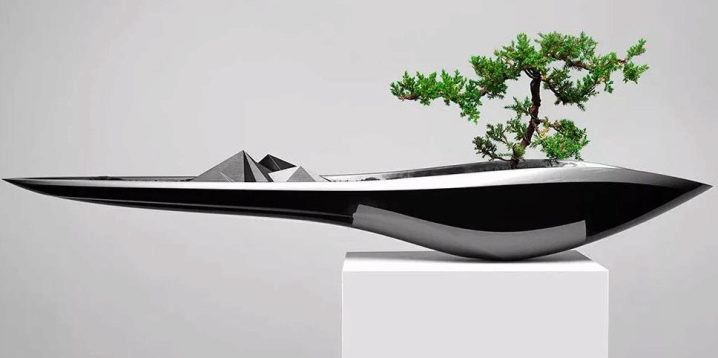
Bonsai is the art of growing miniature trees. This achievement comes from China, which eventually managed to conquer the whole world. Growing mini-copies of deciduous and other crops is also possible at home, so you can postpone the purchase of a finished plant. However, whatever the bonsai, it requires careful maintenance.
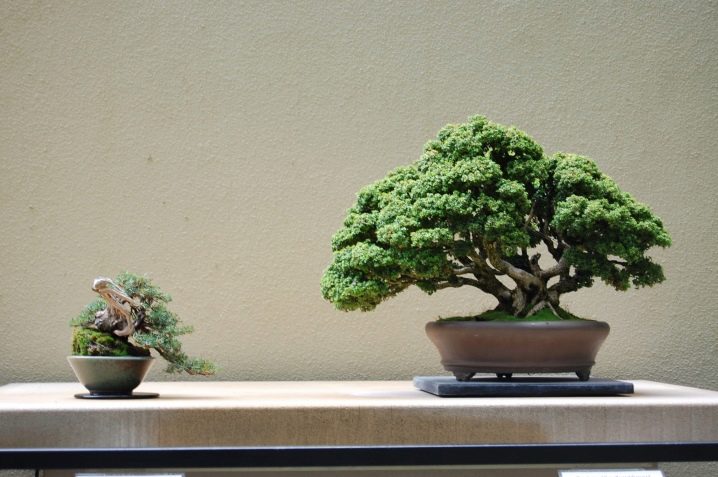
What it is?
Not every bonsai can be called a bonsai. This technique has characteristic features.
- A small tree should have a thickened trunk.
- It should have an organically formed natural crown.
- If the maximum plant height is two meters, then the miniature grows up to 20 cm.
- In eastern countries, it is customary to transplant mature trees into beautiful pots, in which the culture is located throughout almost its entire life.

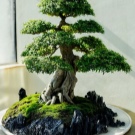
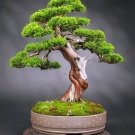
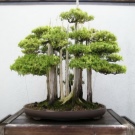

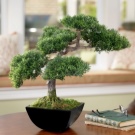
Despite the fact that everyone is used to thinking of bonsai as an invention of Japan, this method of growing indoor crops originally appeared in China in 200 BC. NS. It was called "punsai" or "tree in a bowl." Over the centuries, the Japanese have perfected the art. The reason was the impossibility of breaking up gardens in the adjoining plots and inside buildings. The Japanese hobby, in contact with Buddhism and life values, united man and nature into a harmonious union.

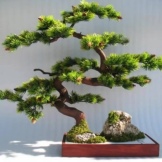
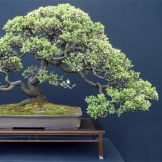
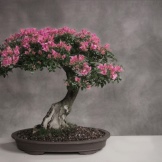
Growing small trees requires a lot of fortitude and patience. The growth rate of the crop is constantly monitored by pruning and pinching the root system, shoots and flower buds.
Varieties of forms
The centuries-old history of bonsai techniques includes various styles of tiny plants. Therefore, before you start growing your own tree, you need to decide in which direction the culture will be formed. The choice of the pot also depends on this. Cascading, overhanging branches and sloping trees require heavy containers. Erect and externally rooted trees are planted in flat, stable pots. Let's take a look at the most popular styles.
- Shakan - a tree with a slight slope to one side. It symbolizes the ability of a person to resist any difficulties, like trees resist the wind.
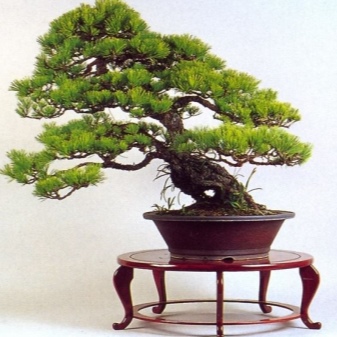
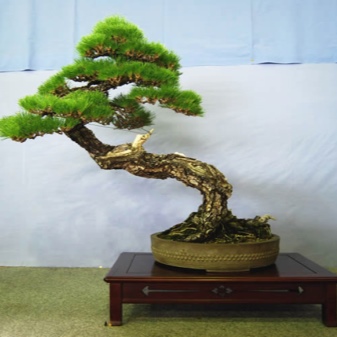
- Kabudati - a tree with two trunks having a common base and root system. Over time, they acquire different thicknesses.
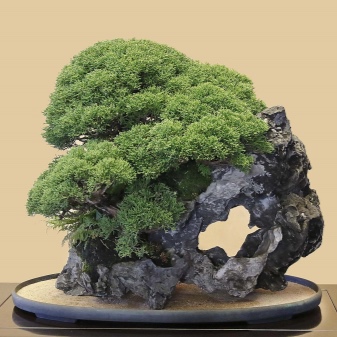

- Tekkan - an upright bonsai, somewhat similar to a scrub. The lower zone of the trunk is bare, allowing one to contemplate a powerful superficial root system. As a rule, three main branches are left on the tree.
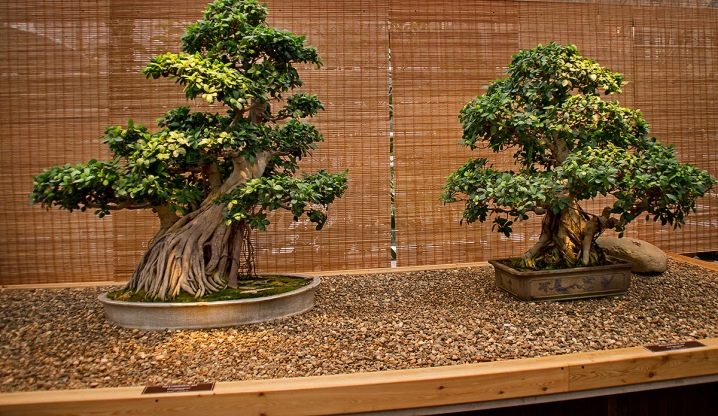
- Ese-ue - a composition made of several plants that give the impression of a forest.

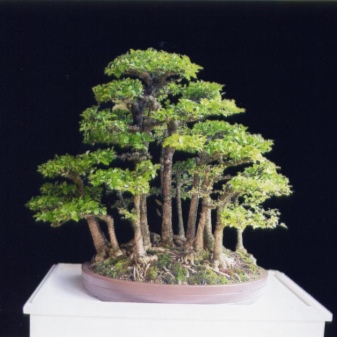
- Kengai - a strongly inclined tree, the branches of which are directed in one direction. Half of the trunk can be exposed. The crop is grown in tall pots.
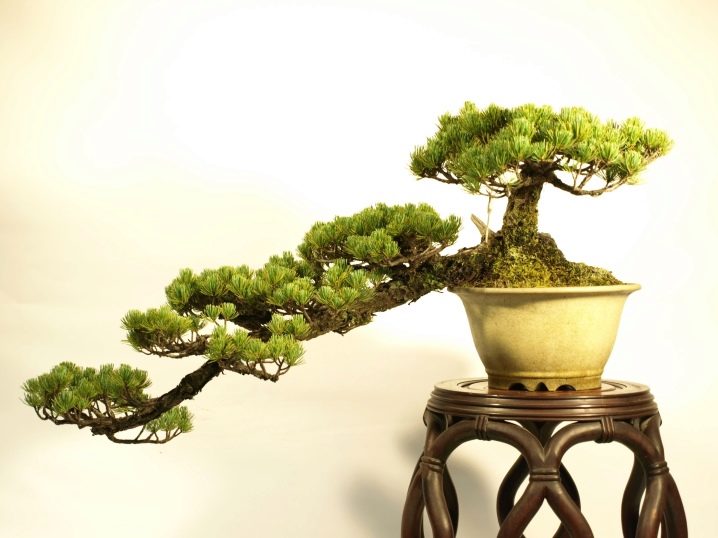
- Sharimiki - the style in which the dead areas of the bark are preserved. The selected fragments are pre-cut and then exposed to the action of the bleach.
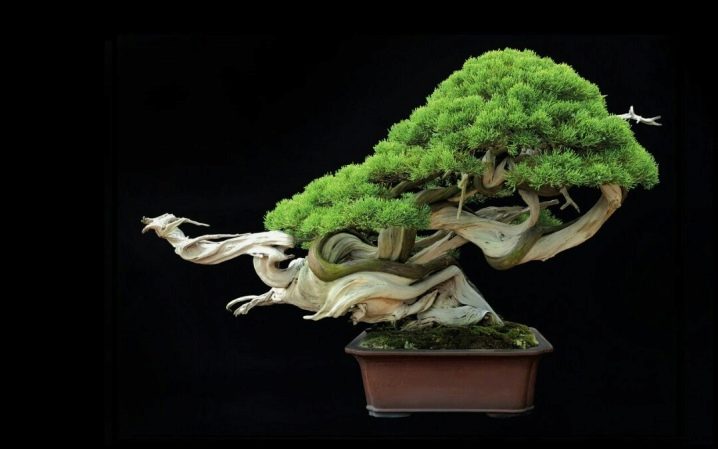
- Bancan - the trunk of the tree is twisted into a knot.
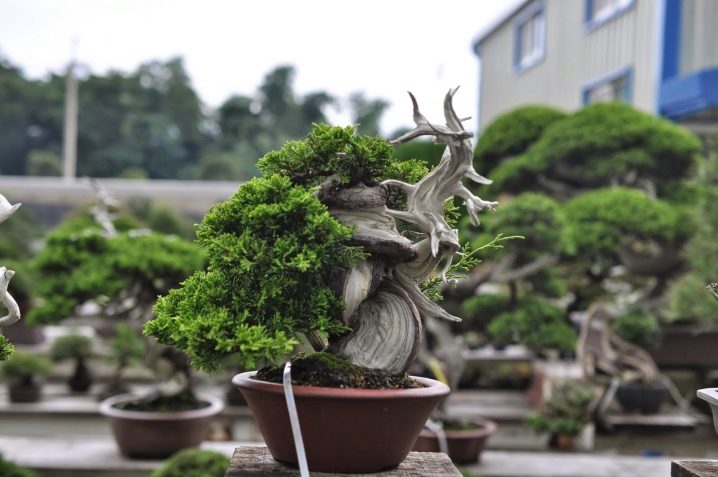
- Neagari - style with roots visible on the ground surface. It is used for tropical plants.
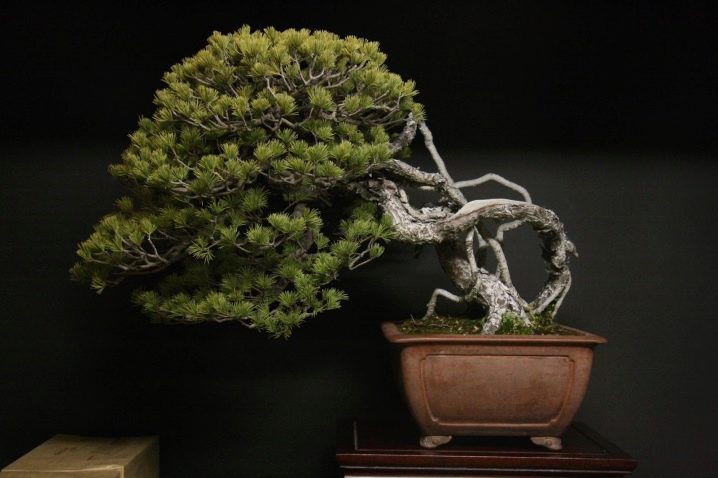
- Khan-kengap - the top of the trunk is tilted to the side while the base remains straight.
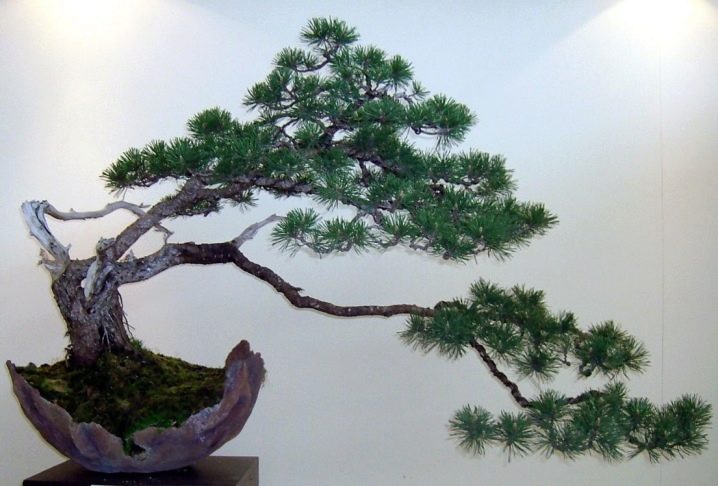
To master the bonsai technique, it is best to start with the tekkan style.
Pots
The miniature is planted in a shallow flat container that controls the growth of the culture and allows the formation and pruning of its root system and crown.Each year, the trees are transshipped into a slightly larger container. Ceramic pots that can support the weight of the plants are preferred. This is especially true of cascading forms of bonsai. At the bottom of the container, several drainage holes are made, which facilitate the removal of moisture and allow the plant to be attached to them. Before planting a crop, a suitable pot must be scalded with boiling water or treated with a solution of potassium permanganate to protect the roots of the tree from fungal diseases.
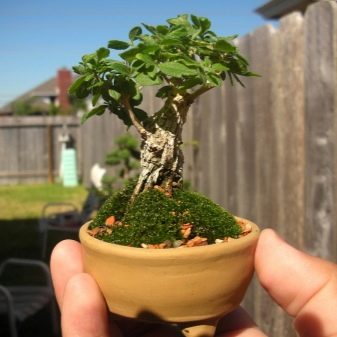
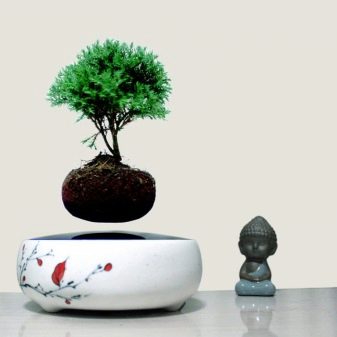
Suitable species of shrubs and trees
Plants are suitable for miniatures, the trunk and branches of which become lignified as they grow. It is worth giving preference to the cultures of your climatic region. In this case, it is better to abandon trees and shrubs with large buds, fruits and leaves. Conifers suitable for growing bonsai:
- juniper;

- larch;
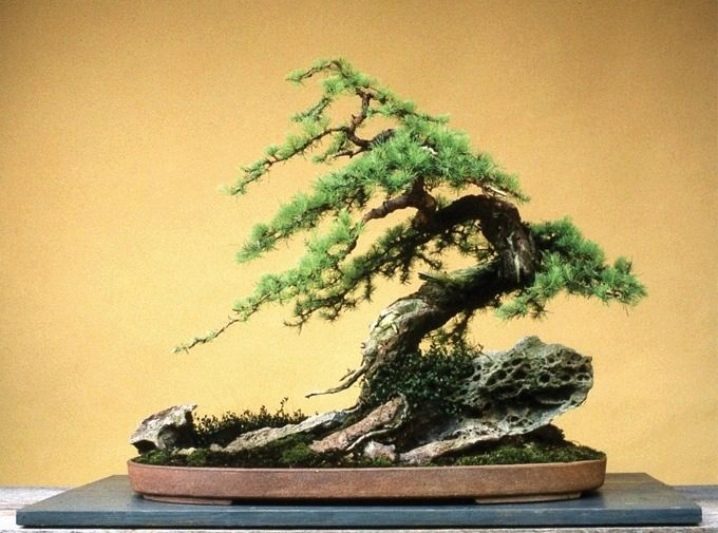
- cypress;
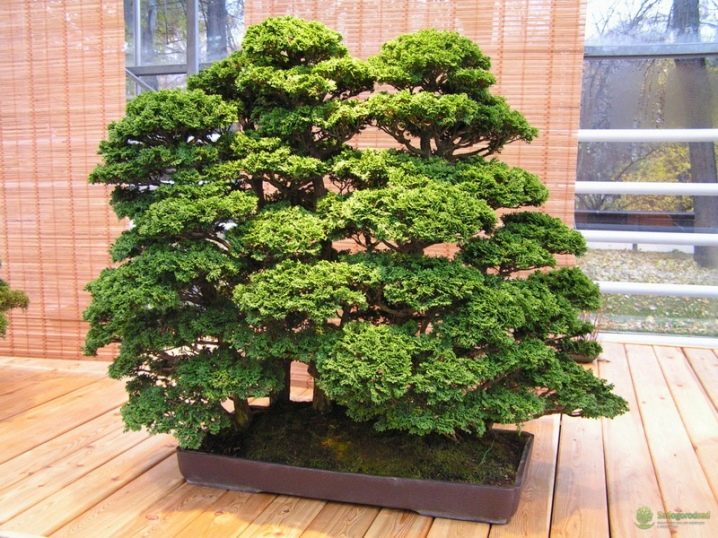
- thuja;

- Pine;
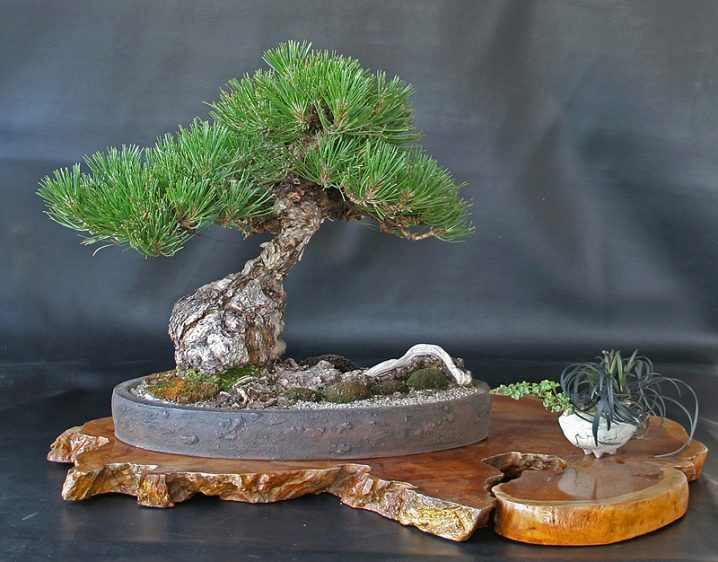
- araucaria.

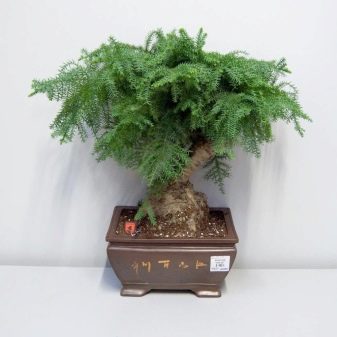
Deciduous:
- Birch;
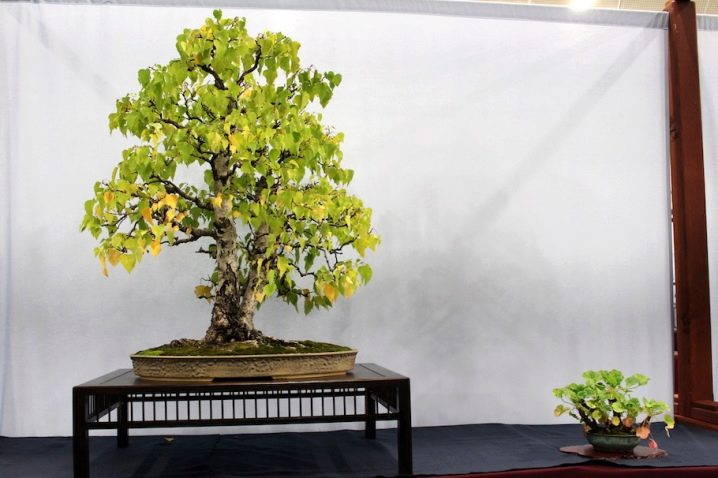
- maple;
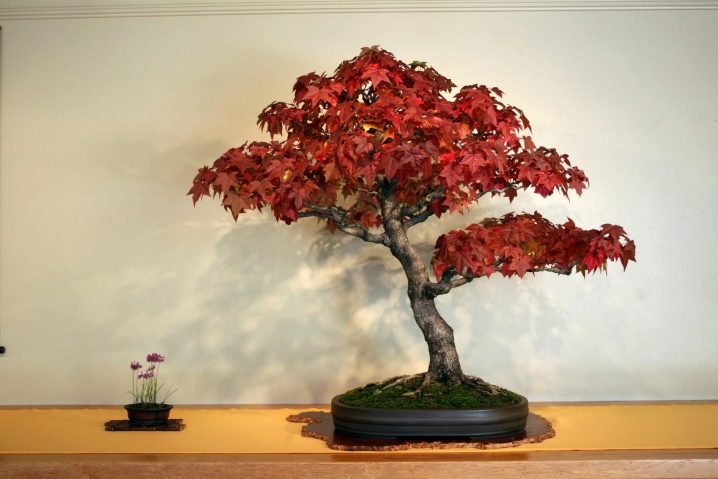
- hornbeam;
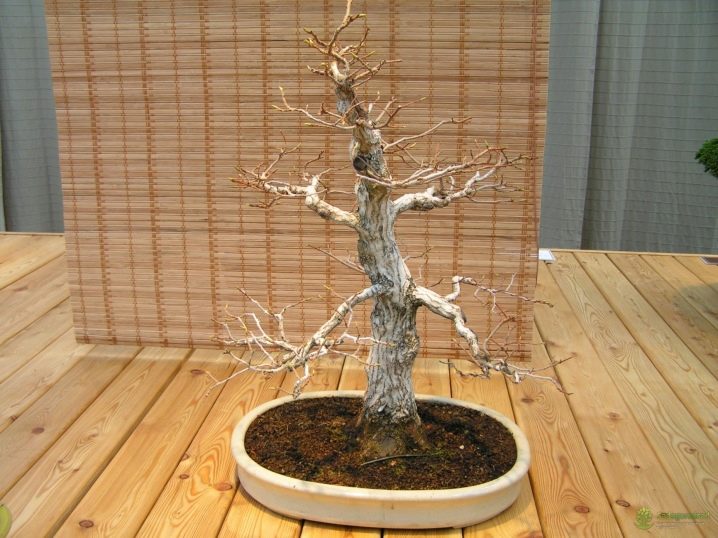
- willow;
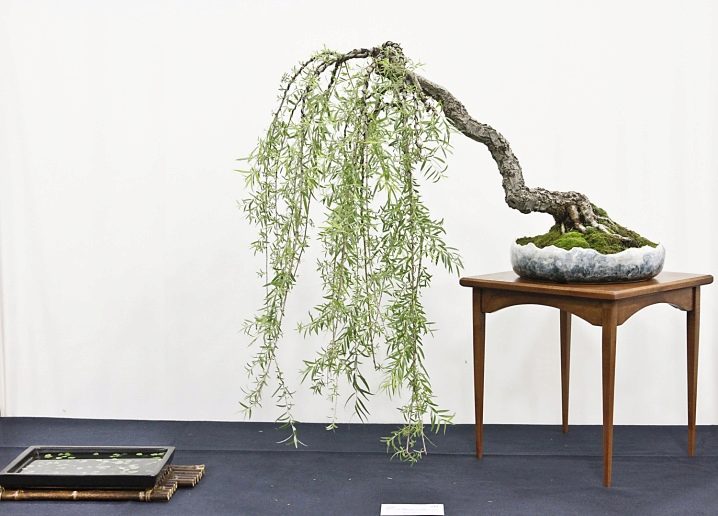
- oak;
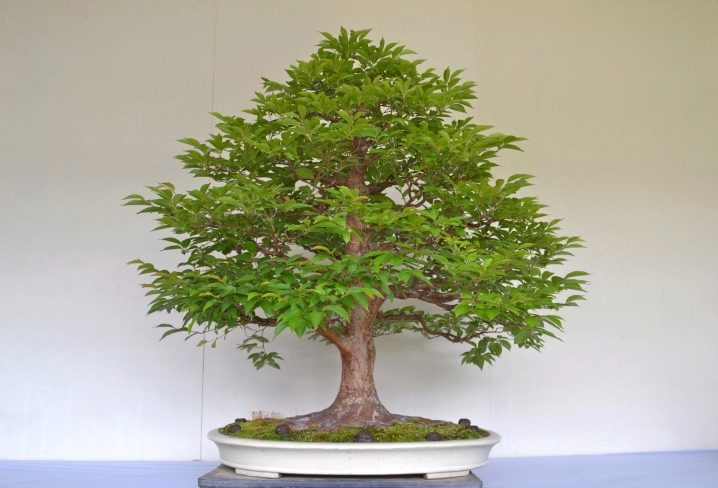
- ficus Benjamin;
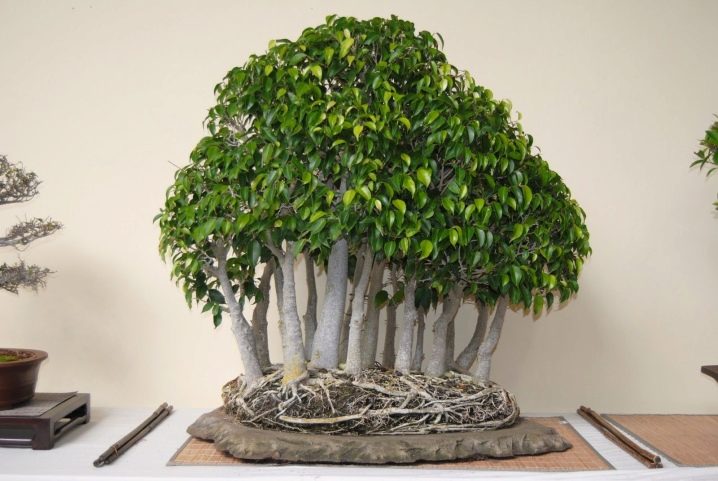
- myrtle;
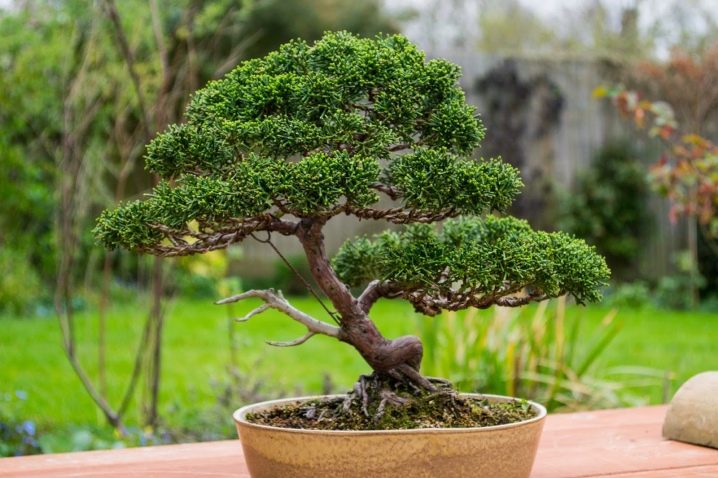
- elm.
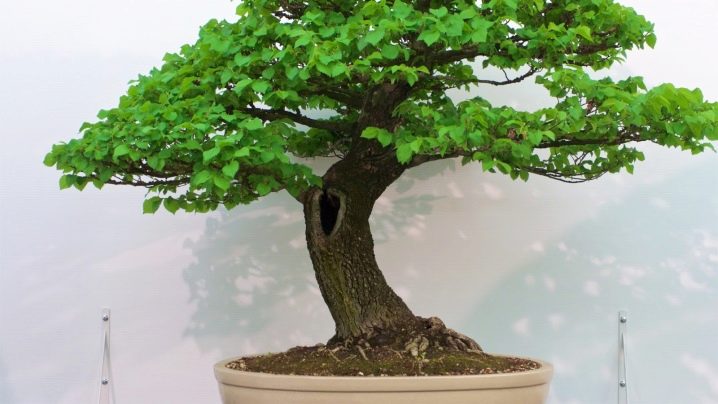
Blooming:
- azalea;
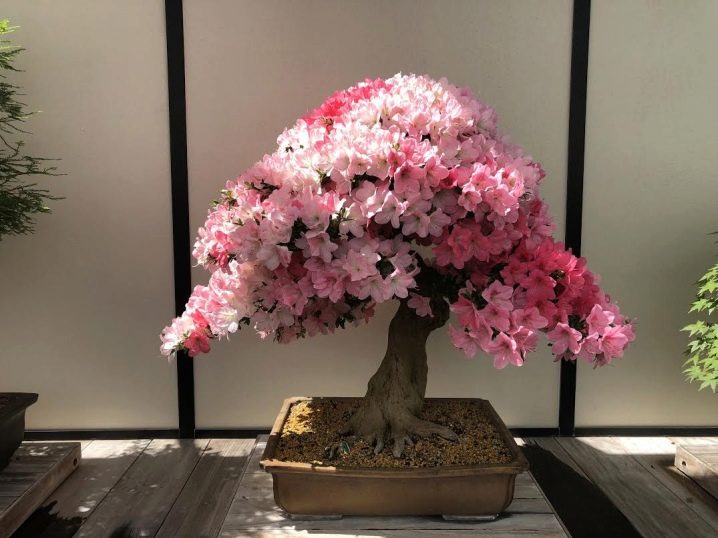
- acacia;
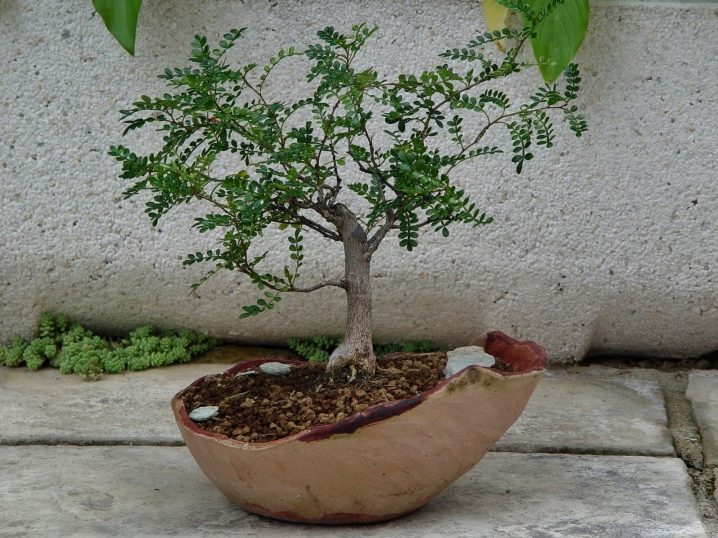
- peach;
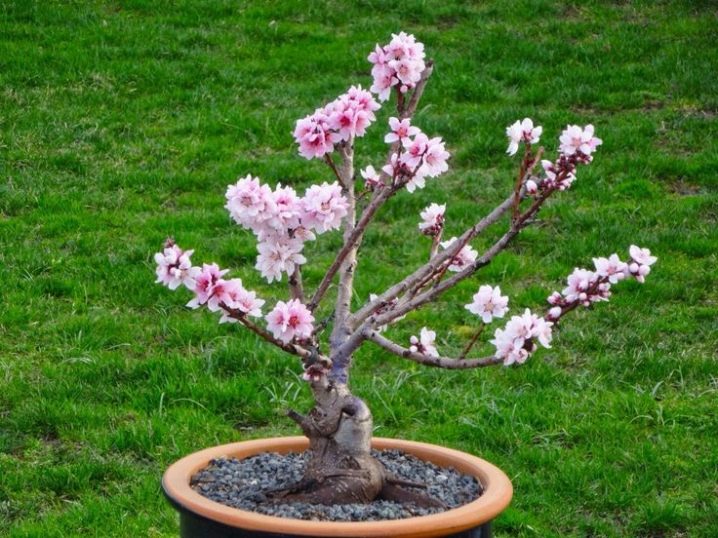
- plum;
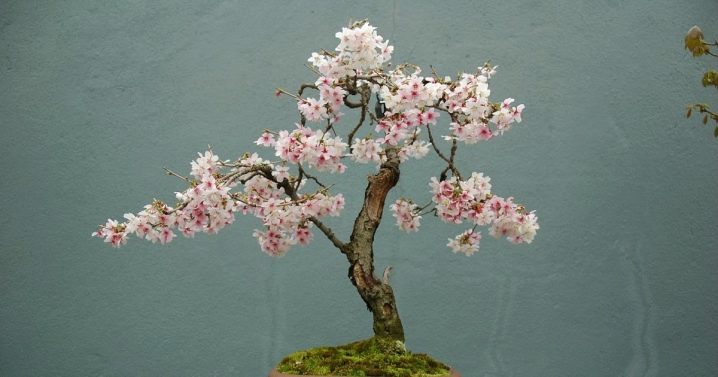
- wisteria;

- magnolia;

- various citrus fruits (lemon, orange, calamondin);
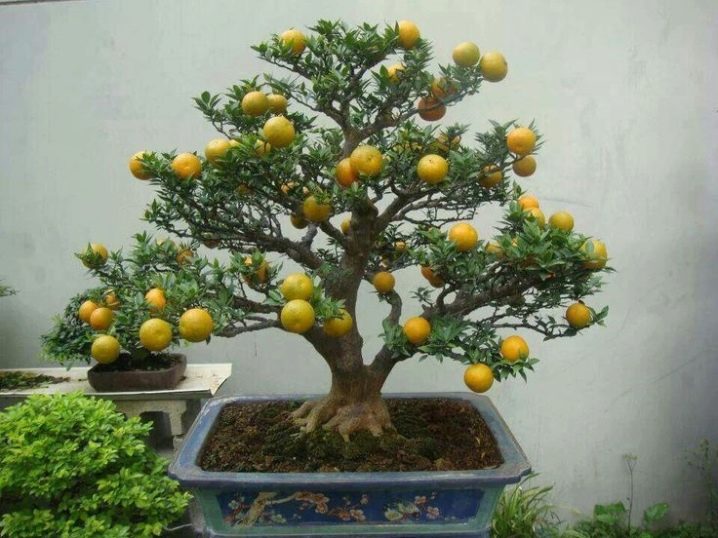
- dwarf pomegranate;
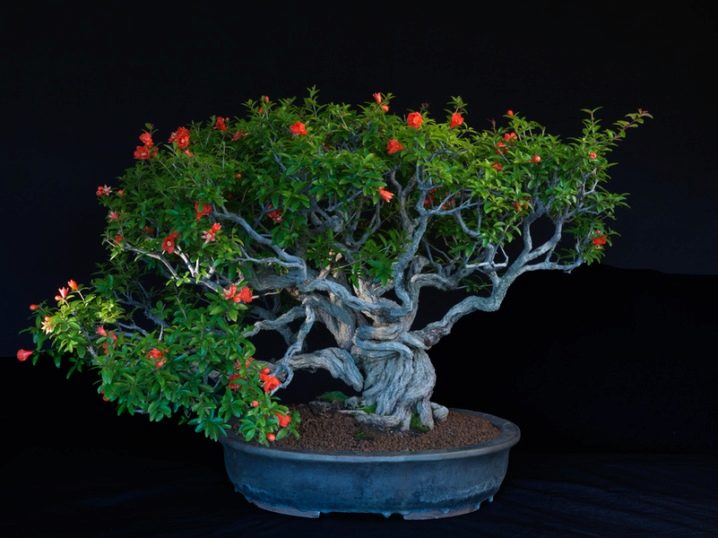
- Apple tree.

Unusual varieties of bonsai are obtained from bonsai, barberry, hawthorn, wisteria. Good in miniature Chinese ligustrum, araucaria.
How to grow?
To grow a bonsai with your own hands, you need a set of special tools for forming the crown of culture and other events.
- Concave pliers for cutting wire and removing branches at the base of the trunk. It is important not to leave any hemp, burrs or other protrusions.
- Convex pliers for removing protruding tree parts (roots, trunk parts). Due to the special shape of the instrument, the incisions heal quickly.
- Scissors for cutting thin roots.
- Curved tweezers for plucking buds and pine needles, removing dead plant parts.
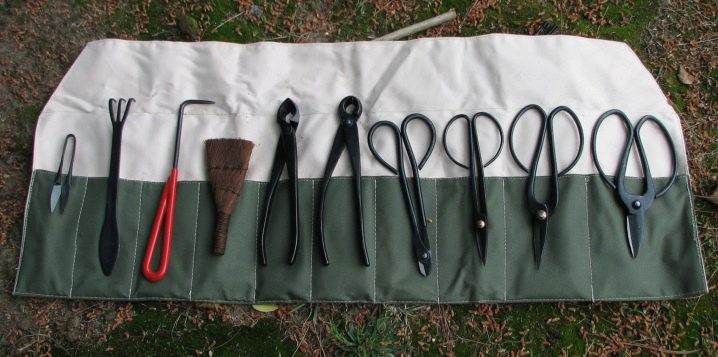
Taking care of bonsai is not easy. Such crops are especially demanding for watering and growing conditions.
Accommodation
For most crops, a well-lit area without direct sunlight is chosen. In the period from noon to early evening (from 11:00 to 16:00), the plant is shaded. Periodically, the bonsai should be turned in different directions to the light for uniform development and crown formation. With a lack of light, young shoots stretch out, become thin and weak, the leaf plates can twist. If it is impossible to provide the culture with a sufficient amount of natural light, the plant should be placed under a phyto-lamp. It is also worth considering that the place where the tree is located must be protected from drafts.
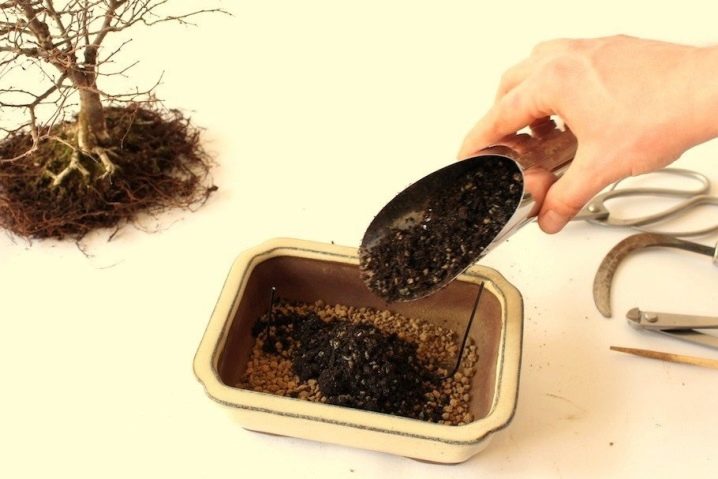
Temperature regime
For a miniature culture, it is necessary to create a temperature regime close to real, observing all the conditions for changing the environment. Subtropical plants (myrtle, pomegranate, boxwood) are able to adapt to indoor conditions. Therefore, they are suitable for growing by beginners. Fresh air has a beneficial effect on bonsai. A huge plus will be the ability to place plants in the warm season in open areas, balconies, windows. Plants overwinter at temperatures from -10 to +18 degrees. The range of temperature conditions is associated with a different need for crops. Conifers, as well as mountain ash and maple, prefer a lower temperature, which can drop below 0. Tropical plants hibernate at +18.
If it is impossible to organize a cold wintering, the pot with the plant is enclosed with any material in order to reduce the access of warm air to the miniature.
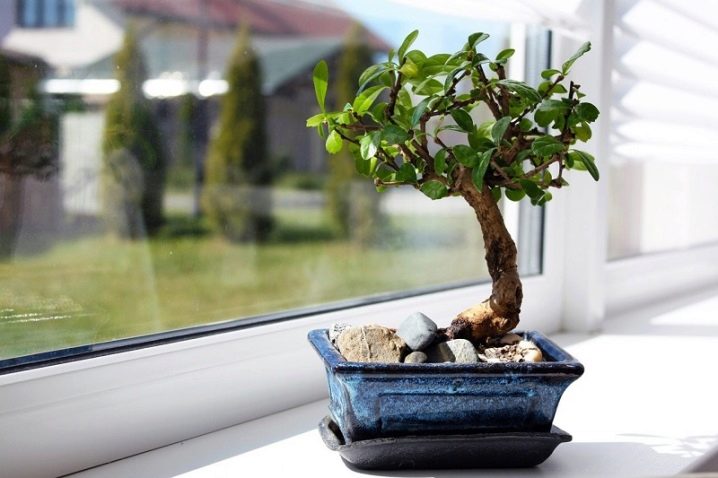
The soil
For cultivation, a meager but loose soil is used, which slows down the growth of the plant. The composition must contain clay "Akadama" and washed sand. Soil substance for various crops:
- for flowering: 3 parts of sand, 7 parts of sod land, 7 parts of nutritious humus;
- for deciduous: 3 parts of sand and 7 parts of turf;
- for conifers: 2 parts of sand and 3 parts of turf.
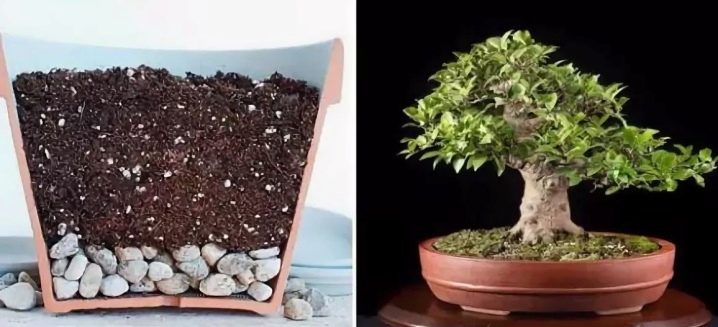
You can also use a mixture of clay, peat, rotted leaves and sand (small stones).
Before planting a plant, any soil must be disinfected. The earth is calcined in the oven for several hours or spilled with a solution of potassium permanganate. The use of purchased earthen mixtures leads to the rapid development of trees due to the fertilizers they contain. To remove excess nutrients, the earth should be boiled in a sieve for 30 minutes or placed in the oven. If it is impossible to carry out these manipulations, the soil should be mixed with the old earth in a ratio of 1: 4.
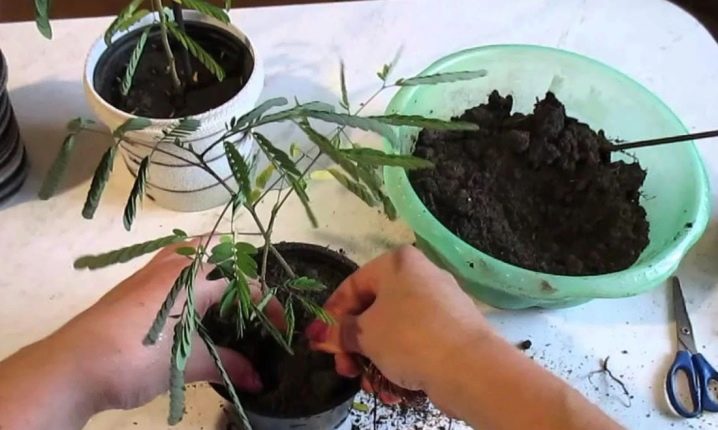
Top dressing
Caring for a tree at home includes proper fertilization of the plant. Fertilization of the culture is carried out throughout the year. In the summer and spring months, fertilization is applied once a week, and from September to March - once a month. Fertilizers are applied to wet soil (half an hour after watering). As a fertilizer, special preparations for bonsai or ordinary mixtures for indoor plants, suitable for the crop variety, are used (it is not recommended to fertilize conifers with solutions for flowering plants). The nutrient liquid is diluted in proportions weaker than those suggested by the manufacturer. For example, it is recommended to use 50 ml of fertilizer, therefore, 10-15 ml will be required for bonsai.

It is worth abandoning the use of granular preparations or sticks, since as the fertilizer dissolves, the period of feeding the tree stretches for months. This leads to the rapid development of culture and the impossibility of its further formation in the chosen style. It is forbidden to fertilize miniatures during the period when the plant is weakened, after transplanting or pruning, during the flowering period and after its completion. It is also important to remember that conifers are fed half as often as other crops.
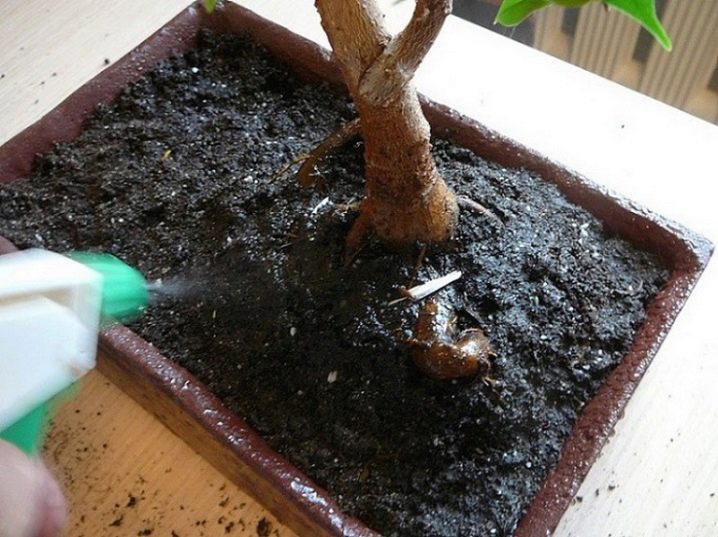
Watering
In small and flat containers, the soil dries out faster than in a regular pot. When planting a plant, the soil is compacted. Compressed soil absorbs moisture more difficult, which also leads to rapid drying of the substrate, so watering the bonsai is done by immersing the pot with the plant in a container of water for several minutes. It is necessary to water the tree at the root until water begins to seep through the drainage holes. Excess liquid is drained from the pan half an hour after watering.
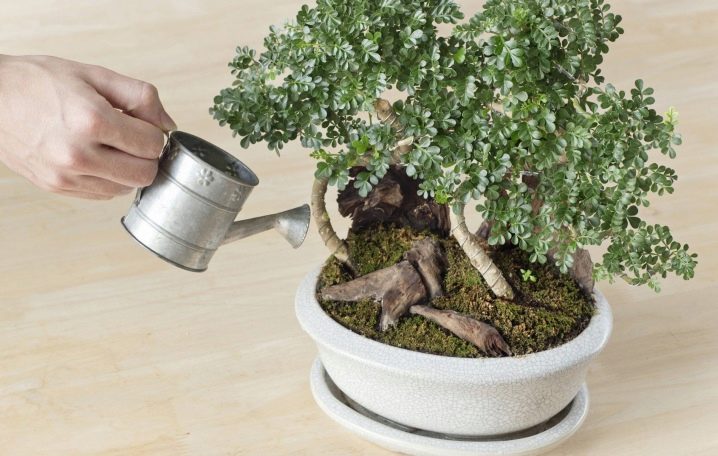
In between wetting, the top layer of the substrate should dry out. In the summer season, bonsai is watered regularly, sometimes every day, and sparsely on winter days. From waterlogging of the soil at low temperatures, the plant may die. The frequency of watering the crop depends on the tree species. For example, tropical species require more water. Soil moistening occurs in the morning and evening hours. Avoid getting moisture on the sheet plates in active sunlight. Deciduous trees require humidified air, frequent spraying. The water is used clean, filtered, soft. It is desirable that the temperature of the liquid be several degrees higher than the ambient temperature.
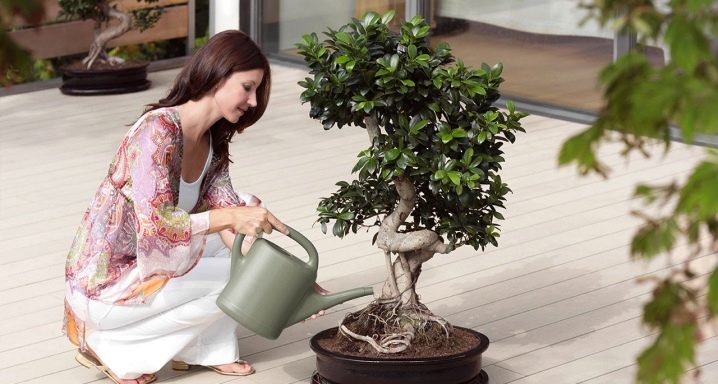
Fight disease
Like any crop, miniature trees require protection from insect pests and diseases. The most common threats:
- aphid;
- caterpillars;
- nematodes;
- shield;
- ants;
- grinder beetle;
- spider and red mite;
- rust;
- verticillosis;
- root rot;
- powdery and downy mildew;
- chlorosis;
- white root rot.
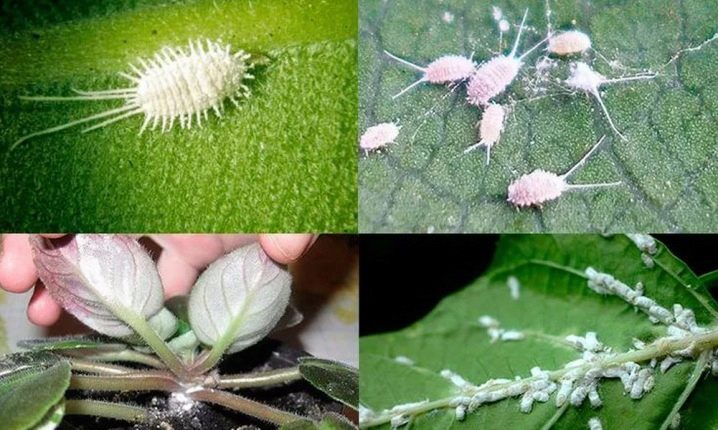
Caterpillars, ants, nematodes and other insects infect the culture by initially being in the ground. You should not use garden or other soil for planting a crop without first calcining or disinfecting the soil mixture. Also, pest infestation can occur during a warm period when placing a pot with a plant on the site. Chlorosis occurs when there is insufficient illumination of the place where the culture is located and the scarcity of plant nutrition. The disease is manifested by the loss of color of the leaf plates, their fading. It is treated quite easily - by feeding and increasing daylight hours.
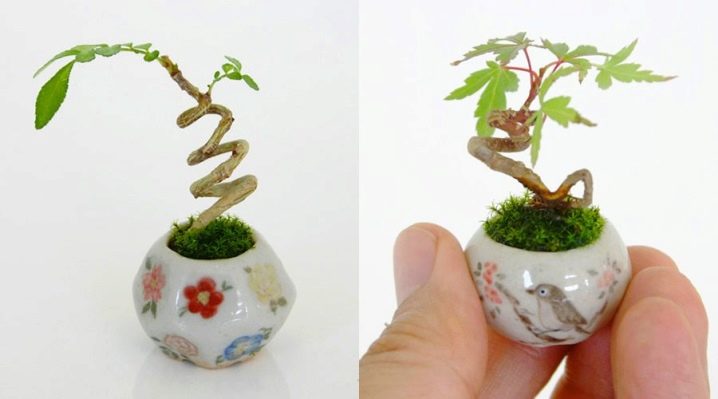
Powdery and downy mildew - fungal diseases that leave a white coating on the leaves (pseudo-mealy creates a downy coating), which can lead to the death of the plant. The leaves affected by the disease can eventually turn brown, brown and completely die. In the early stages of the disease, affected leaves and shoots are cut and burned. This prevents the spread of the disease to healthy parts of the crop. In advanced cases, special preparations are used, the plant is sent to quarantine.
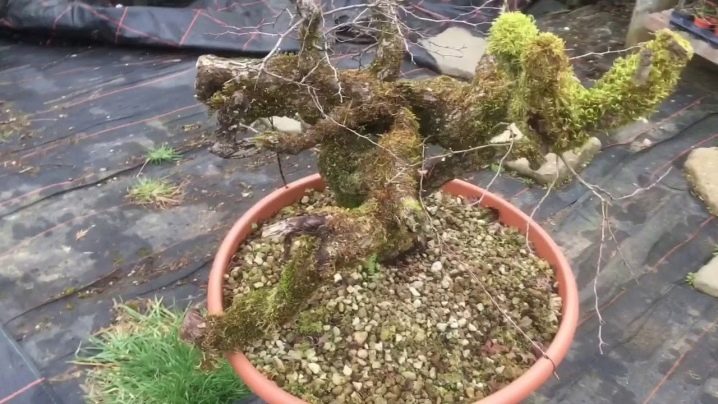
Rust is a fungus that manifests itself as yellowed, black and brown spots on the leaf blades, bark and shoots of the miniature. Most often, the disease affects conifers and fruit crops. At the first sign of fungus, the plant is isolated from its neighbors. All affected areas are removed, the culture is treated with fungicidal preparations. Verticillosis is an infectious disease that affects the vessels of culture. It manifests itself in light spots on the leaves in the area of the veins. It is caused by cutting the root system, leaves, shoots with dirty tools. Treatment is carried out by pruning the affected areas, replacing the substrate, treating the plant with a fungicide.

Root rot is expressed by a bloom of green on the trunk and roots of the plant. It leads to softening of the roots. The disease develops with excessive soil moisture, insufficient ventilation of the root system, and lack of drainage. During treatment, the culture is placed in a ventilated room, watering is reduced, and dead roots are removed.
White root rot is a parasitic fungus. Symptoms: a general deterioration in the state of the culture, leaf fall, swelling of the roots, discoloration of the trunk and shoots. To cure the plant, it must be transplanted into a new container with a complete replacement of the soil, rinsing the root system, pruning the affected areas and treatment with wound healing preparations. The use of disinfectants is acceptable.

Pruning
To make the plant look like a bonsai, formative pruning should be done after transplanting the crop into a permanent pot. Thickening and changes in the appearance of the tree trunk, as well as slowing down the growth of the plant, are achieved by different methods.
- Making vertical cuts on the crop stem to reduce sap movement.
- Copper wire wrapped around the trunk at the base of the tree. Due to the constriction, the upper tissues of the plant are squeezed, which leads to a slowdown in sap flow. This results in an increase in the thickness of the barrel above the wire. When the required parameters are reached, the material is removed and fixed in another place.
- Crown formation by removing branches, pinching buds in the spring or throughout the year, when the plant is actively growing.
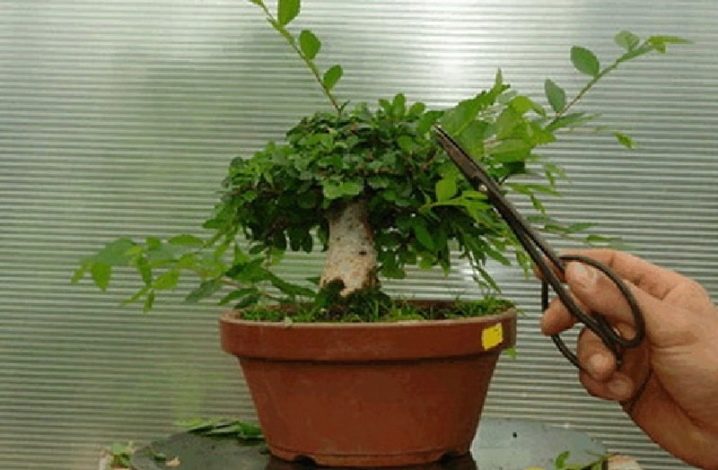
When buds appear, overlapping branches are removed from the tree, and young shoots are pinched on the first or second pair of leaves. Flowering crops form after the flowering period. The tool must be sharp and clean. Open places are sprinkled with coal, treated with resin or special ointments. With intensive crop growth, formative pruning occurs throughout the year, up to several times a season. The more often the pinching occurs, the denser the crown of the plant will be, and the smaller the leaves. Sticking out branches, knocking out of the conceived composition, are cut off with sharp scissors or pruning shears.

Consider the rules for shaping a trunk using a wire.
- In the selected area, all branches and dry fragments are removed.
- When forming the bend of the trunk, the top layer of soil is removed in the area of the root system. The plant is gently tilted to the chosen side at the desired angle. One end of the wire is wrapped with a soft material and fixed around the tree trunk in a spiral, the other end is fixed in the substrate from the inside of the culture bend and buried in. The trunk should be fully wired up to the level of the first branches of the crown.
- Removal of copper material occurs after a few years, when the trunk stiffens and consolidates its position. If branches are formed, then they are released after six months.

Transfer
The culture is transplanted during the winter months when the plant is dormant. For the first time, a young plant is transplanted in the second year of growth. Before removing the tree, it is necessary to moisten the earthen lump well. If the soil is not completely rooted, then the plant should be returned to the old container with the replacement of the soil with a new one. In this case, it is better to postpone the transplant for the next year.
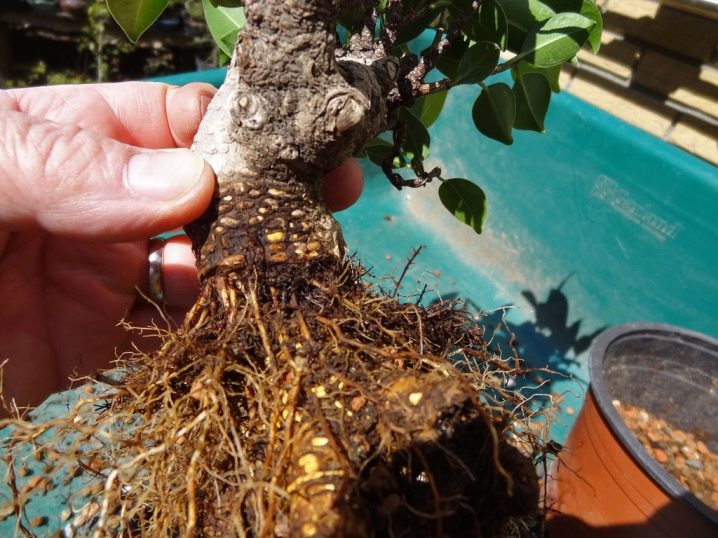
The new pot in which the tree will be located should be several centimeters larger than the previous one. The roots of the plant are placed horizontally, sprinkled with fresh substrate and watered.
After the release of the culture, the soil is removed from the root system, the roots sticking out are cut and washed. It is also worth removing the lateral underdeveloped roots with pruning shears, shortening the core part. Thickened superficial ones are left alone; if desired, these areas can not be sprinkled with earth. After transplanting the plant, it is better to cover the soil with green sphagnum moss. This is to reduce the drying out of the topsoil and roots.
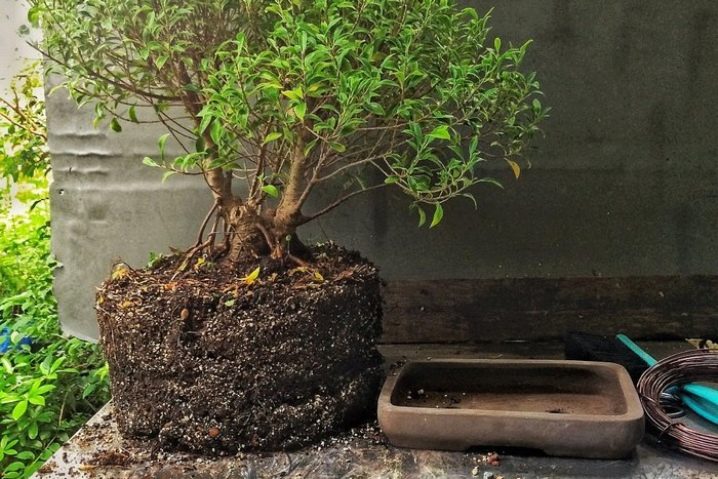
Reproduction
Seeds
Seeds of two types of shrubs and trees are suitable for growing an exotic crop. One type sprouts immediately. Another is in hibernation at first, while the plant sprout should be located in a cold room. This can be a refrigerator, unheated balcony or loggia.
- The seeds are wrapped in a damp cloth, sphagnum moss or sand. They are placed in a container and placed in a cold place (from +7 to +9 degrees) for up to 5 months. The low temperature and humid environment prepares the seeds for the growing season. Moving the container to a warmer place will wake up the sprouts.
- Growing plants from seeds takes place from early spring to early October. Seedlings grown at the end of August need an additional light source (phytolamp), since the number of hours of daylight is reduced in the autumn-winter period.
- For more successful germination of seeds, special peat cups, pre-soaked tablets or a substrate of peat and sand are used. Until signs of sprouting appear, the container is kept in the dark under a film. The optimum ambient temperature depends on the selected crop.
- The greenhouse is periodically ventilated. Excess moisture or condensation will kill the sprout. During the emergence of the emergence of the greenhouse, they begin to ventilate more often, the container with the plant is rearranged to a bright place.
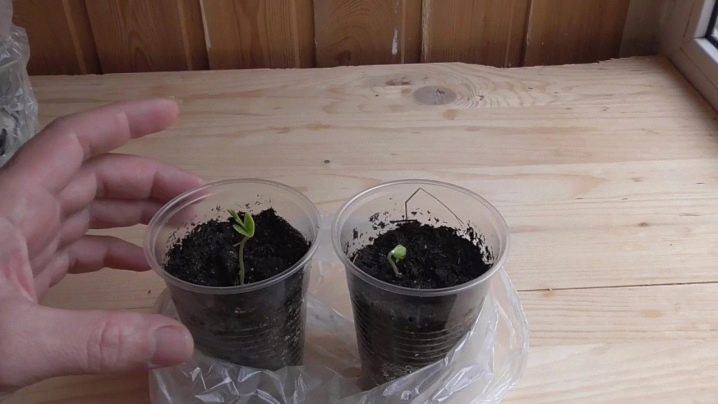
Cuttings
Cuttings suitable for growing bonsai are selected in the spring season. Preference is given to semi-woody shoots or green young shoots up to 10 cm long and 5 mm thick. The cuttings are planted in sterile soil. If desired, preparations are added that accelerate the development of the root system. Let's consider the process of planting a cutting in more detail.
- A quarter of the container volume is filled with a mixture of clay and fine gravel in a 1: 1 ratio
- The rest of the pot is filled with soil suitable for the selected crop.
- The lower part of the cutting is cleared of twigs and buds. The branches of the sprout are shortened by a third with an oblique cut using a pruner.
- Sections can be charcoal or sprinkled with Epin.
- Then it is necessary to water the soil with clean water.
- The container with the handle is tucked away from direct sunlight to reduce the risk of leaf burns.
- Germination of the cuttings takes 2-3 weeks on average.
- A shoot transplant occurs a year after the start of the rooting process. Two years later, they begin to form the crown.
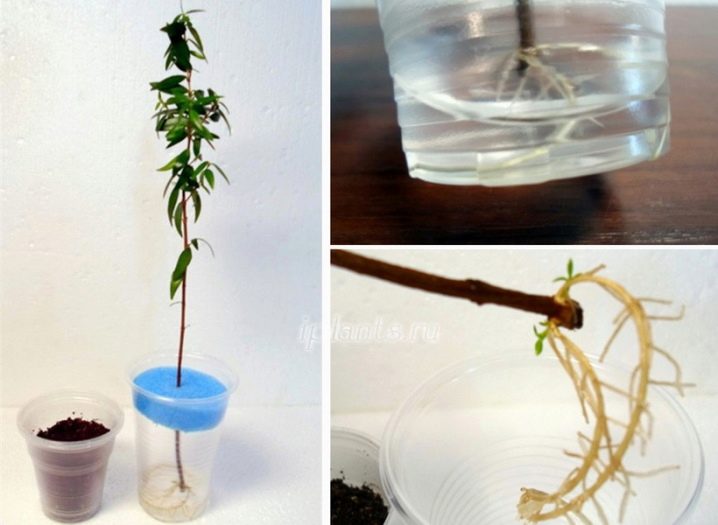
Florist tips
It is very important to normalize the bonsai watering system. You can use the method of immersing the pot in water, a wick and drip irrigation system, irrigation. The main thing is that the substrate does not wash out during watering. During the growing season, the plant is most sensitive to the amount of moisture in the soil. Mineral fertilizers based on algae are applied 2-3 times a week or less often (depending on the season). In the spring, during the active growth of the crop, mainly nitrogen fertilizers are introduced into the soil mixture, phosphorus and potassium are required by plants in smaller quantities. In the fall, they do the opposite. However, it should be remembered that for fruiting and flowering plants, potassium is the most important element, as it contributes to the formation of flower ovaries.

In winter, in mild climates, it is better to keep the plant in a cool place, creating dormant conditions. In this case, it is better to cover the pot with a bubble wrap or other material that can protect the root system of the plant from hypothermia. In the spring, the period of bonsai formation begins: the crown and trunk are put in order.
For information on how to shape and care for a bonsai tree, see the next video.































The comment was sent successfully.